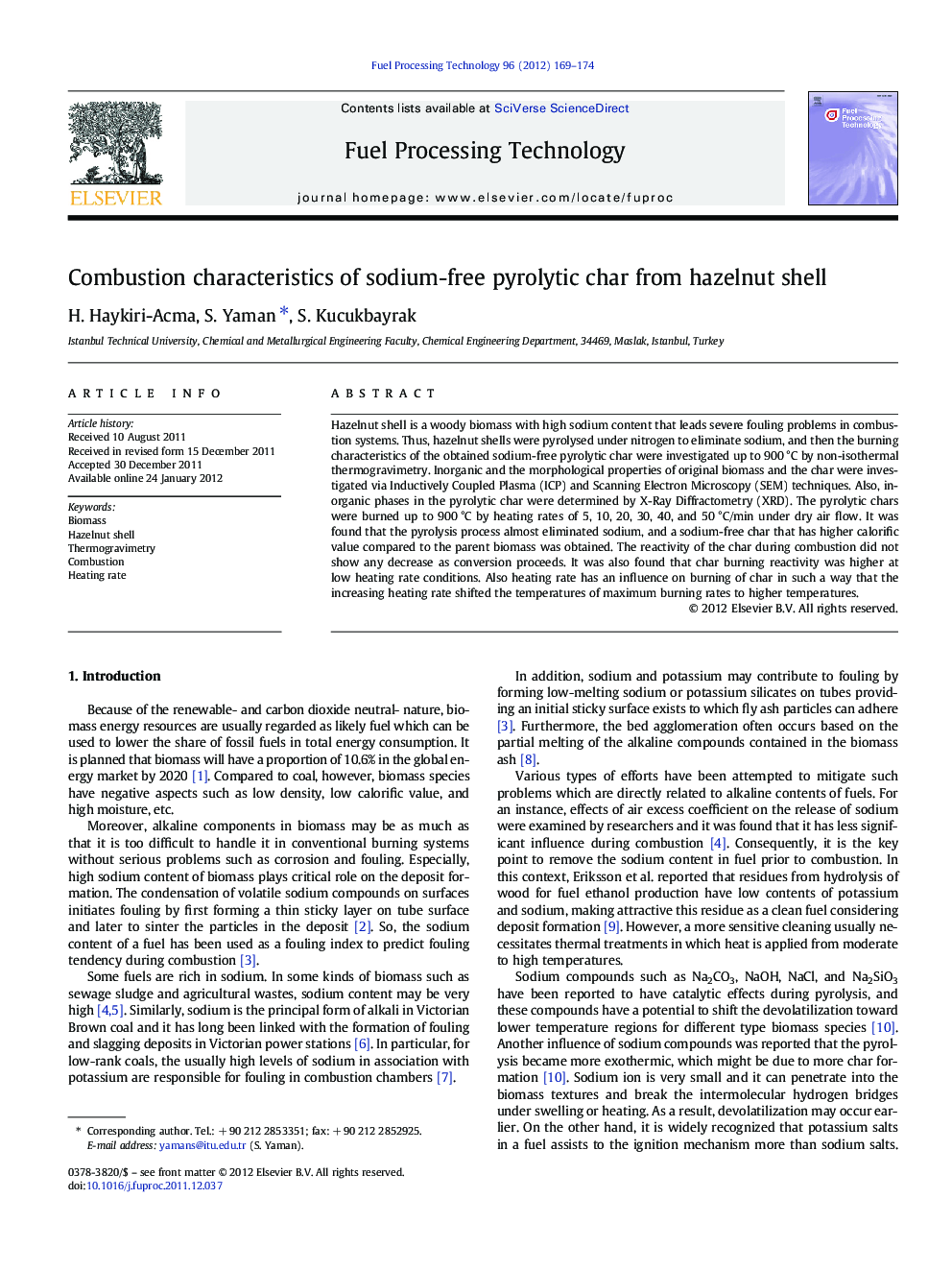| Article ID | Journal | Published Year | Pages | File Type |
|---|---|---|---|---|
| 210402 | Fuel Processing Technology | 2012 | 6 Pages |
Hazelnut shell is a woody biomass with high sodium content that leads severe fouling problems in combustion systems. Thus, hazelnut shells were pyrolysed under nitrogen to eliminate sodium, and then the burning characteristics of the obtained sodium-free pyrolytic char were investigated up to 900 °C by non-isothermal thermogravimetry. Inorganic and the morphological properties of original biomass and the char were investigated via Inductively Coupled Plasma (ICP) and Scanning Electron Microscopy (SEM) techniques. Also, inorganic phases in the pyrolytic char were determined by X-Ray Diffractometry (XRD). The pyrolytic chars were burned up to 900 °C by heating rates of 5, 10, 20, 30, 40, and 50 °C/min under dry air flow. It was found that the pyrolysis process almost eliminated sodium, and a sodium-free char that has higher calorific value compared to the parent biomass was obtained. The reactivity of the char during combustion did not show any decrease as conversion proceeds. It was also found that char burning reactivity was higher at low heating rate conditions. Also heating rate has an influence on burning of char in such a way that the increasing heating rate shifted the temperatures of maximum burning rates to higher temperatures.
► Alternative study to mitigate problems of sodium in biomass. ► We produced sodium-free char from high sodium content hazelnut shell. ► We found that the reactivity of char during combustion did not decrease as conversion increased. ► It was also found that char burning reactivity was higher at low heating rate conditions.
